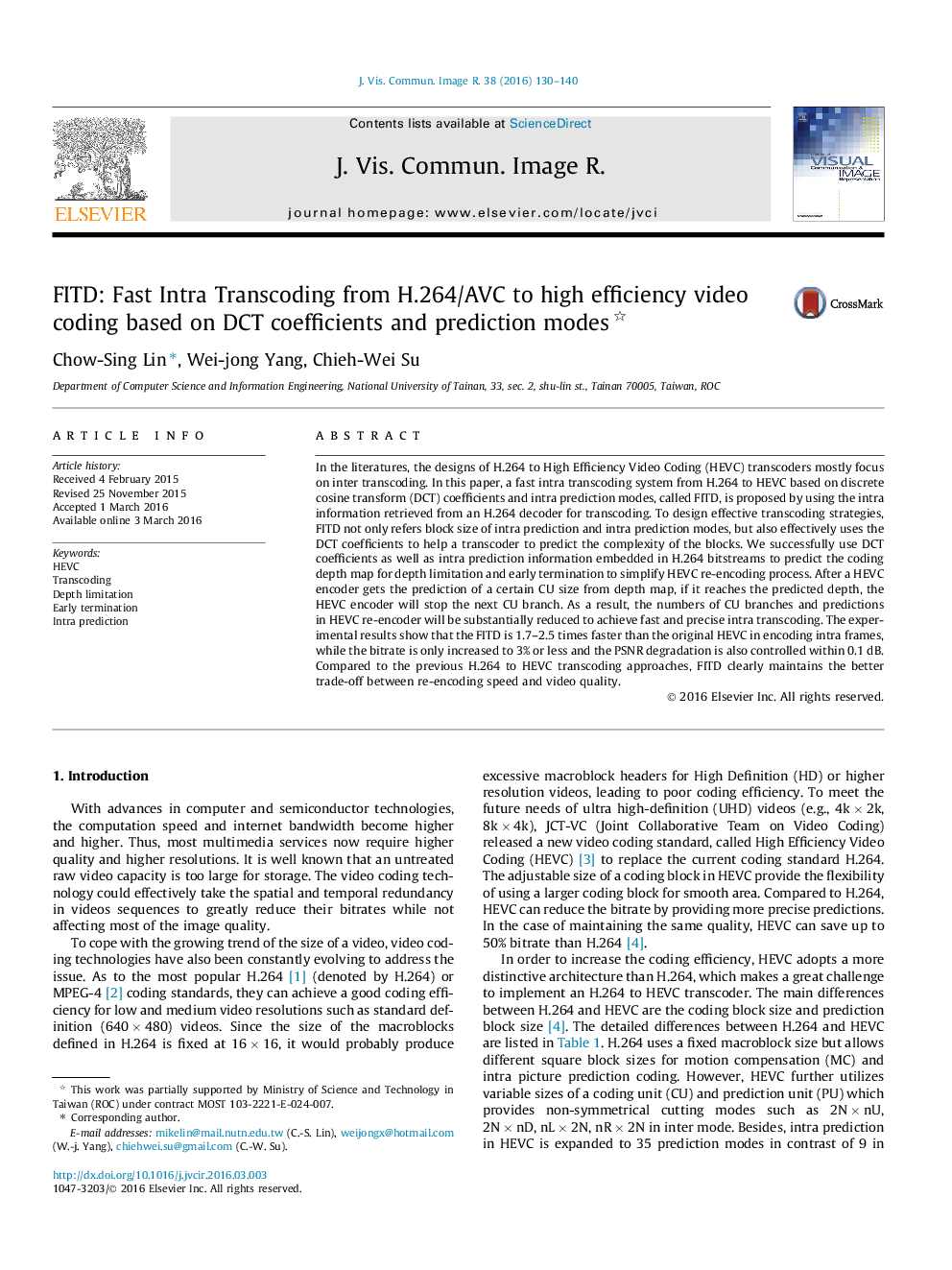| Article ID | Journal | Published Year | Pages | File Type |
|---|---|---|---|---|
| 529657 | Journal of Visual Communication and Image Representation | 2016 | 11 Pages |
•FITD: Fast Intra Transcoding from H.264 to HEVC is proposed.•The residual of DCT coefficients determines the accuracy of intra prediction.•Depth limitation and early termination on CU decision improves intra transcoding.
In the literatures, the designs of H.264 to High Efficiency Video Coding (HEVC) transcoders mostly focus on inter transcoding. In this paper, a fast intra transcoding system from H.264 to HEVC based on discrete cosine transform (DCT) coefficients and intra prediction modes, called FITD, is proposed by using the intra information retrieved from an H.264 decoder for transcoding. To design effective transcoding strategies, FITD not only refers block size of intra prediction and intra prediction modes, but also effectively uses the DCT coefficients to help a transcoder to predict the complexity of the blocks. We successfully use DCT coefficients as well as intra prediction information embedded in H.264 bitstreams to predict the coding depth map for depth limitation and early termination to simplify HEVC re-encoding process. After a HEVC encoder gets the prediction of a certain CU size from depth map, if it reaches the predicted depth, the HEVC encoder will stop the next CU branch. As a result, the numbers of CU branches and predictions in HEVC re-encoder will be substantially reduced to achieve fast and precise intra transcoding. The experimental results show that the FITD is 1.7–2.5 times faster than the original HEVC in encoding intra frames, while the bitrate is only increased to 3% or less and the PSNR degradation is also controlled within 0.1 dB. Compared to the previous H.264 to HEVC transcoding approaches, FITD clearly maintains the better trade-off between re-encoding speed and video quality.
